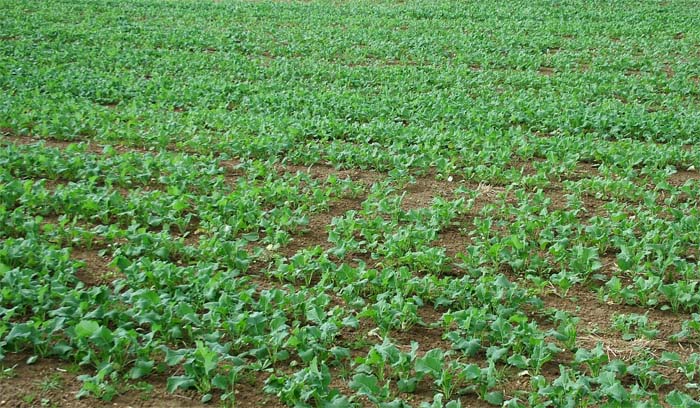
Oilseed rape crops could be at greater risk from a three-way disease attack this coming season so growers must adopt a robust fungicide strategy from the outset, leading agronomy firm Hutchinsons warns.
Warm and damp conditions during August have been conducive to development and carryover of key soil-borne diseases and any early-sown crops could be at particular risk from phoma, light leaf spot and Verticillium wilt infection, says the firm’s technical manager Dick Neale.
“Although harvest is late, a lot of rape has already been drilled where previous crops had failed and it is growing very quickly in the warm, moist soils. The late harvest and a continuing trend for shallow cultivations also means there is a lot of crop residue on or near the surface carrying phoma spores that need warmth and moisture to sporulate.”
It is therefore much more likely that the 10% infection threshold for the first fungicide spray will be reached earlier than normal, possibly by the first week in October if conditions remain conducive to disease development, says Mr Neale.
He urges growers to monitor crops closely and use the Rothamsted phoma forecasting tool in order to help time sprays accurately. A robust dose (0.75litres/ha) of prothioconazole/tebuconazole can be more effective than straight metconazole, he suggests.
Verticillium threat increasing
Mr Neale says the weather during August will also favour the transfer of soil-borne Verticillium wilt into emerging crops.
The disease has become widespread in the UK since it was first confirmed in 2007 and while its impact on yield is not always quantifiable, he says the threat should not be underestimated, especially in susceptible varieties such as Excalibur (see table).
“Castille was another particularly susceptible variety and Verticillium wilt ultimately proved to be the death knell for it.”
But while recent conditions may favour the transfer of the pathogen to young rape plants the disease won’t express itself in crops until next April at the earliest and any yield impact depends on conditions during late flowering and early pod set, notes Hutchinsons seeds manager Colin Button.
“Hot, dry conditions at that time will result in more premature pod death in infected plants, which means crops don’t fully set seed or oil.”
The prevalence of susceptible varieties in the past combined with tighter rotations of oilseed rape has facilitated the build-up of Verticillium inoculum in soils and its transfer and impact on crops will be exacerbated when climatic conditions are right, he adds.
Control is generally limited to variety choice, although Mr Neale says that later drilling and a fungicide strategy containing prothioconazole in combination with azoxystrobin can alleviate the initial infection and impact of Verticillium.
“There’s not a lot growers can do about Verticillium now, so use this season to think about variety choice, when you drill and fungicide sequence to alleviate future pressure as much as you can. A lot of varieties have decent tolerance to verticillium, although there is probably half a dozen or so that are susceptible.”
Norfolk-based Hutchinsons agronomist and farmer Alex Wilcox says Verticillium is now present in nearly all the oilseed rape crops he advises on, but yield impact is negligible where a robust fungicide strategy has been adopted.
He too favours a prothioconazole/tebuconazole mix, although says product choice should be kept flexible depending on what level of growth regulation is required at the time of spraying. “Preventing lodging is just as important as disease control in oilseed rape, as you can soon lose half the yield from a lodged crop.”
He acknowledges tighter rotations have been a factor in disease build up and advises growers to try and keep oilseed rape to one year in four or five where possible and avoid drilling too early.
